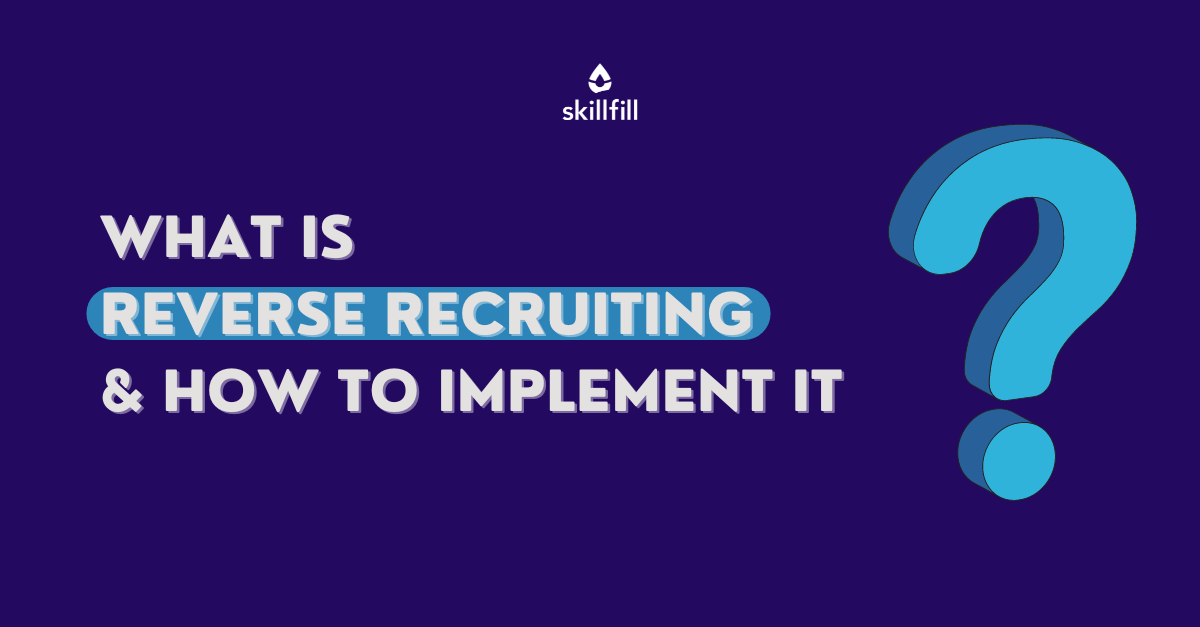Draw In Top Ability: How Reverse Recruiting Can Profit Your Firm
Draw In Top Ability: How Reverse Recruiting Can Profit Your Firm
Blog Article
Elevate Your Hiring Game With Strategic Reverse Hiring Strategies
As the landscape of hiring evolves, organizations are increasingly turning to innovative approaches such as calculated reverse recruiting to get a competitive side in securing leading skill. This change in way of thinking calls for a thoughtful reconsideration of exactly how business approach the working with procedure, focusing on bring in passive prospects rather than solely depending on active work hunters - reverse recruiting.
Understanding Calculated Reverse Hiring
Strategically leveraging the principle of reverse recruiting can considerably boost your organization's ability acquisition approach. By flipping the conventional employment approach on its head, reverse recruiting entails proactively looking for and drawing in passive candidates that may not be proactively searching for brand-new opportunities. This positive method enables companies to take advantage of a pool of high-grade talent that might not come through conventional work posts alone.
Understanding the ins and outs of critical reverse recruiting is important for its effective execution. It requires a deep understanding of the market landscape, rival evaluation, and the specific ability that remain in high need. reverse recruiting. By conducting extensive research study and leveraging market understandings, companies can identify and engage with top skill in an extra personalized and targeted manner

Benefits of Reverse Hiring
Reverse recruiting provides an one-of-a-kind strategy to talent purchase by proactively engaging with easy prospects who might not be proactively seeking task chances. This approach allows business to take advantage of a swimming pool of ability that conventional recruiting techniques might forget. One of the crucial benefits of reverse recruiting is the capability to target candidates who are already utilized and pleased in their current functions. These people are typically leading entertainers in their respective fields, bringing important abilities and experience to the table.

Key Components of Reverse Hiring
Having checked out the advantages of reverse recruiting in targeting leading entertainers that are web content in their existing roles, it is necessary to comprehend the vital elements that make this strategy successful in bring in passive prospects. The initial essential part is building a strong employer brand name. Passive prospects are often not actively looking for new chances, so having a favorable credibility as a company can ignite their rate of interest. Leveraging social media systems and employer review sites to display firm society and values can help in this regard.
One more vital element is customized outreach. Considering that easy prospects are not actively trying to find tasks, generic recruitment messages are likely to be overlooked. Customizing Full Article outreach initiatives to highlight exactly how the certain skills and experiences of the candidate align with the firm's demands can dramatically boost the possibilities of getting their attention.
In addition, cultivating connections with passive candidates with time is crucial. Consistently involving with them with networking events, sector meetings, or have a peek at this website also occasional check-ins can help construct connection and count on, making them much more responsive to possible task opportunities in the future. By including these crucial components right into reverse recruiting methods, organizations can effectively bring in and employ top ability from the pool of easy candidates.
Carrying Out Reverse Recruiting Methods

Additionally, developing compelling employer branding and showcasing a favorable company society can aid draw in easy candidates and motivate them to take into consideration new occupation possibilities. Developing a skill area or talent pipeline can additionally be advantageous in nurturing partnerships with easy candidates gradually, maintaining them engaged and curious about potential future roles within the company. On the whole, implementing reverse recruiting techniques needs an aggressive and personalized method to skill purchase, concentrating on developing purposeful links with easy prospects to drive lasting recruitment success.
Measuring Success in Reverse Recruiting
Efficient dimension of success in recruiting strategies requires a detailed assessment of key performance signs and metrics to examine the effect and efficiency of skill purchase initiatives. In the context of reverse recruiting, details metrics can give useful understandings into the efficiency and effectiveness of the method. One critical metric is the top quality of prospects engaged through reverse recruiting networks. By gauging the conversion price of passive candidates right into energetic applicants or hires, companies can determine the efficiency of their reverse recruiting efforts.
Keeping an eye on retention rates among prospects recruited with reverse approaches can offer understandings into the long-lasting success of the strategy. High retention rates suggest that the prospects sourced through reverse recruiting are a great fit for the company, adding positively to its general skill swimming pool.
Conclusion
To conclude, strategic reverse recruiting offers an one-of-a-kind technique to working with that concentrates on drawing in top skill through aggressive engagement and relationship-building. By leveraging this approach, organizations can get a competitive edge in the skill market and improve their recruitment results. It is necessary to comprehend the advantages, essential parts, and approaches of reverse recruiting to effectively implement and determine success in this ingenious strategy to hiring.
Report this page